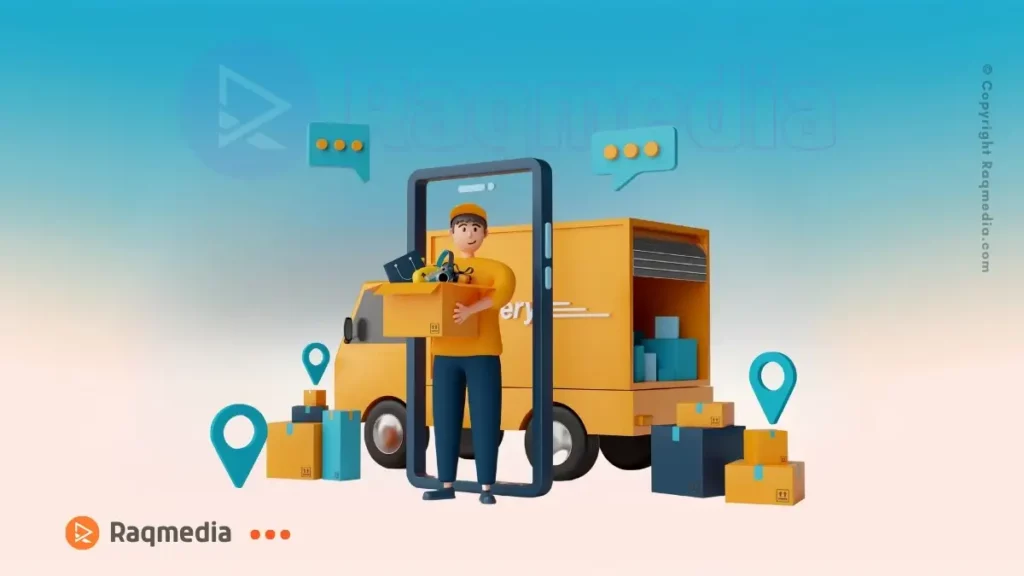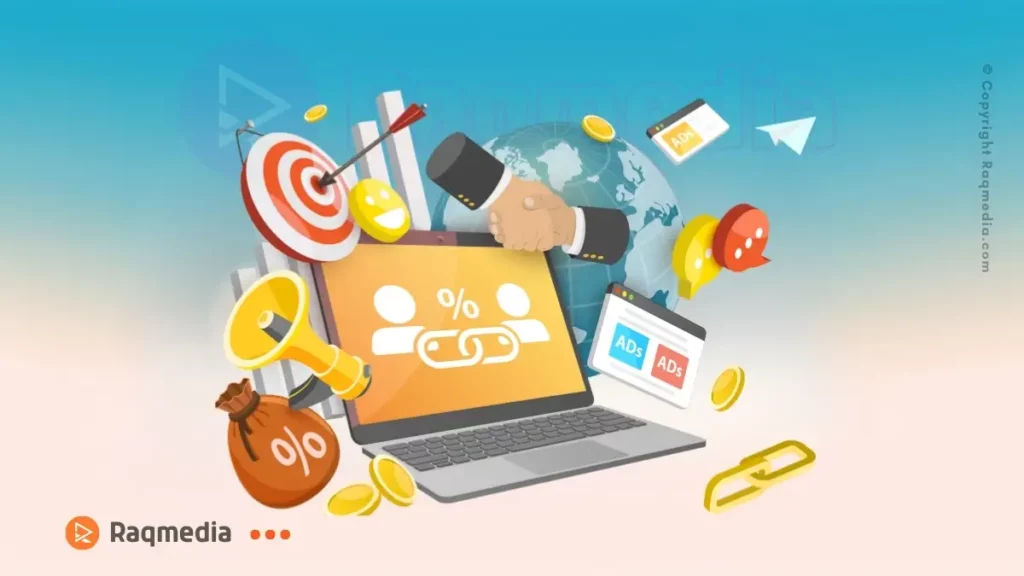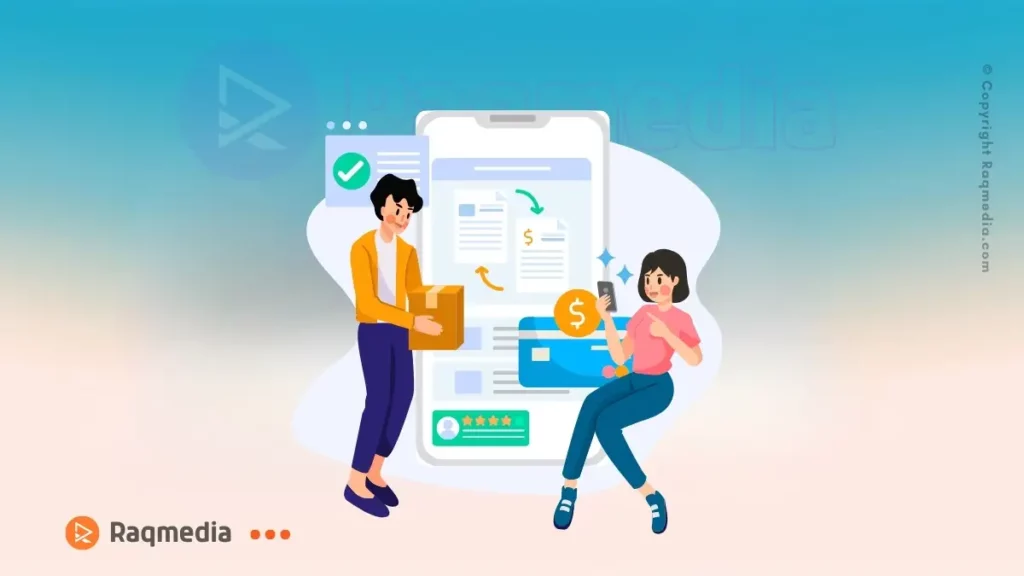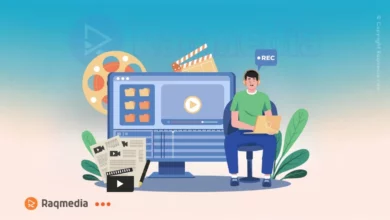In the bustling world of e-commerce, where competition is not just fierce but relentless, every sale counts. As entrepreneurs strive to carve out their space in this digital marketplace, the significance of innovative sales strategies becomes increasingly apparent. The transformative power of upselling, downselling, and cross-selling offers brands essential tools to elevate their revenue potential while enhancing customer satisfaction.
Welcome to “The E-commerce Trifecta,” where we delve deep into these three integral strategies that can redefine your approach to sales.
The E-commerce Trifecta: Mastering Upsell Downsell and Cross-sell Strategies
Understanding how to effectively implement these tactics can make all the difference between a one-time transaction and a loyal customer relationship. Upselling encourages higher-value purchases, downselling mitigates losses when customers hesitate at checkout, and cross-selling enhances overall cart value with complementary products – all instrumental in heightening your brand's allure within an oversaturated market.
In this article, we'll guide you through each strategy's ins and outs, revealing best practices backed by real-world examples that showcase success in action.

Prepare to unlock the secrets of maximizing average order values while maintaining a customer-centric focus—because in today’s e-commerce landscape, mastering the trifecta of upsell, downsell, and cross-sell isn't just advisable; it’s essential for longevity and growth in business. Let’s embark on this journey together!
What is Upselling?
Upselling is a strategic sales technique where businesses encourage customers to purchase a higher-end product or add-ons compared to their initial selection. In the realm of e-commerce, upselling plays an essential role by influencing consumers at critical decision-making moments, not only enhancing their overall shopping experience but also driving larger revenue streams for the business. By introducing premium options or complementary products, entrepreneurs can subtly guide shoppers toward choices that offer greater value while still aligning with their original needs.
One of the primary benefits of employing upsell strategies is the increase in average order value (AOV). For instance, if a customer decides on purchasing a laptop, suggesting a model with additional features—such as increased storage or enhanced performance capabilities—can convert a standard sale into one that brings in higher margins. Additionally, upselling can foster customer satisfaction; when done correctly, it helps buyers feel more informed and empowers them to make better purchasing decisions that align closely with their expectations and requirements. According to research by Shopify, effective upsells can reportedly boost AOV by up to 30%, making it a crucial tactic in maximizing profits.
Successful examples of upselling abound in various industries. For instance, major online retailers like Amazon utilize personalization algorithms that recommend items based on previous purchases and browsing history. When you visit an item page for running shoes, you might see suggestions for advanced insoles or moisture-wicking socks featured directly beneath your choice – a clever nudge towards enhancements perfectly suited to improve your experience.
Similarly, subscription services like meal kit companies often offer upgraded plans with subscriptions tailored but packaged at enticing discounts during checkout. This demonstrates how brands capitalize on existing consumer interest to elevate sales incrementally while simultaneously enriching customer satisfaction.
By understanding what upselling entails and recognizing its numerous benefits, e-commerce enterprises can cultivate innovative approaches that resonate seamlessly with their consumers’ needs. As businesses refine these strategies and adopt personalized methodologies tied to actual buyer behavior, they are bound to unlock significant potential for growth within their competitive landscapes.
What is Downselling?
Downselling is a sales strategy that involves offering a lower-priced option or substitute when a potential customer hesitates to make a purchase due to budget concerns. This approach can be particularly effective in the e-commerce landscape, where customers may abandon their carts after encountering high prices or feeling unsure about the value of their initial selection. Implementing downselling allows businesses to cater to price-sensitive consumers while also preserving the chance for conversions. The key lies in understanding your audience and identifying those moments when a gentle nudge towards an alternative product could secure the sale.
One of the primary advantages of downselling is its ability to reduce cart abandonment rates significantly. According to some studies, nearly 70% of online shoppers leave without completing their purchases, often due to unexpected costs or perceived lack of value. By providing an alternative solution—like suggesting a “good-better-best” product framework—e-commerce businesses can alleviate customer concerns and increase satisfaction. For instance, if someone shows interest in a premium mattress but hesitates due to its cost, offering a more affordable option with similar features could keep them engaged and lead to successful transactions.
Effective downselling requires careful planning and execution. First, it's essential to craft persuasive messaging that resonates with value-conscious consumers without compromising brand integrity. Clear communication about why the downsell option is still beneficial—but at a more attractive price point—can seamlessly turn hesitation into decision-making momentum. Moreover, integrating visuals such as side-by-side comparisons can further emphasize how offers stack against each other while highlighting savings, ultimately making it easier for potential buyers to see the merit in your downsell proposal.
Additionally, timing plays a crucial role in downselling techniques. Targeted prompts during critical touchpoints—such as during checkout or post-purchase follow-ups—can reinforce purchasing decisions by presenting those alternatives exactly when users are weighing their options. Furthermore, measuring conversion rates on these downsell offers helps refine strategies over time, arming e-commerce entrepreneurs with data-driven insights that enhance future campaigns and drive overall revenue growth effectively.
What is Cross-selling?
Cross-selling, a powerful strategy in the e-commerce toolkit, involves offering complementary products to enhance a customer's original purchase. This tactic not only enriches the shopping experience but also serves as an opportunity for businesses to boost their revenue. By presenting relevant alternatives at strategic touchpoints—such as during checkout or within product pages—companies can effectively guide customers toward items they may need or desire, ultimately maximizing their sales potential. For instance, when purchasing a camera, suggesting additional lenses or carrying cases can create a more complete and satisfying experience.

The benefits of cross-selling extend beyond the immediate gains in sales figures; they also contribute to customer satisfaction and loyalty. When consumers feel that a retailer understands their needs through personalized recommendations, they're more likely to return for future purchases. Businesses gain valuable insights into buying behaviors by analyzing which products are commonly bought together. Furthermore, satisfied customers may provide positive reviews and referrals, resulting in organic growth through brand advocacy. A seamless cross-sell approach fosters trust and encourages consumers to continually explore product offerings.
To illustrate effective cross-selling in action, consider Amazon's recommendation engine. As shoppers browse a specific item, suggestions such as “Frequently Bought Together” highlights mutually beneficial purchases that many other customers have made. This method not only increases average order value but ensures buyers leave with solutions tailored to their needs. Another remarkable example is Netflix's content suggestion algorithm—offering alternative shows and movies based on users' viewing history enhances engagement while driving subscriptions.
In summary, cross-selling acts as a critical component for nurturing relationships between brands and shoppers while augmenting overall sales performance. E-commerce entrepreneurs should remain vigilant in crafting strategies that leverage this technique effectively by identifying complementary products and utilizing customer data analytics for personalized experiences. By mastering the art of cross-selling, online businesses will unlock new avenues for revenue growth while keeping customer satisfaction at the forefront of every transaction.
Crafting Effective Upsell Strategies
When it comes to successfully implementing upselling in your e-commerce business, the first step is identifying the products that best complement what customers are already interested in. An effective technique for this identification involves analyzing sales data to recognize which items tend to be purchased together or which higher-tier options have drawn attention from previous buyers.
- For example, if a customer is viewing a smartphone, highlighting premium accessories like high-quality headphones or protective cases can effectively position those products as logical upgrades.
By focusing on relationships between products and understanding customer intentions, you can create tailored upsell opportunities that feel natural rather than forced.
Keep your encrypted messaging apps, software, and devices up to date with the latest security patches and versions. Updates often include essential security enhancements that can protect your communications from newly discovered vulnerabilities. For example, Signal Messenger, known for its strong privacy features, frequently releases updates to bolster encryption protocols and address any potential flaws.
Timing plays a pivotal role in the effectiveness of upselling strategies. Customers whose behaviors indicate readiness to spend more – like those who have engaged with product reviews or related content – are prime targets for an upsell pitch. Use behavioral analytics tools to track these engagement metrics and deploy your offers at moments when they’re most likely to convert. A strategic approach might involve triggering the upsell suggestion during the checkout process, ideally after customers have selected items but before they've completed their purchase. This way, you introduce relevant alternatives when they're already committed but not yet finalized.
While presenting upsells can dramatically enhance average order value, it’s crucial to ensure that such offers don't overwhelm or frustrate customers. The key lies in maintaining clarity and simplicity throughout the user experience.
- One effective method is to visually differentiate upsell suggestions by showcasing them under clear headings such as “You Might Also Like” or “Upgrade Your Choice”.
- Additionally, using succinct messaging that communicates value – like “Enhance your device with this accessory” – reinforces benefits without prompting decision fatigue.
Ultimately, an empathetic approach towards understanding your customer’s journey will dictate how well you succeed at executing these strategies. By leveraging data-driven insights and placing emphasis on appropriate timing while ensuring a seamless display of options, you stand poised not only to maximize revenue via successful upsells but also build long-term customer loyalty rooted in positive purchasing experiences.
Designing Your Downsell Approach
In the competitive world of e-commerce, understanding your customers' financial constraints is essential for optimizing revenue. A well-designed downselling strategy allows you to offer alternative products without losing the sale entirely. The key to a successful transition from an initial product to a downsell offer lies in providing an experience that feels natural and relevant. For instance, if a customer adds a premium kitchen blender to their cart but hesitates at checkout due to price concerns, introducing them to a slightly less expensive model with similar features can effectively retain their interest. This seamless approach not only prevents cart abandonment but also enhances the overall shopping experience by addressing budgetary issues while maintaining perceived value.
Crafting persuasive messaging that resonates with budget-conscious consumers is paramount when deploying downsell tactics. Phrasing offers in terms of benefits rather than outright discounts can greatly influence purchase decisions. Instead of simply stating a lower price, highlighting how the alternative product serves similar needs or purposes—without compromising quality—can create compelling reasons for customers to consider it. An online apparel store might showcase a stylish but affordable version of a customer’s desired jacket, framing it as “a fantastic choice for casual outings” as opposed to just being “cheaper.” Such thoughtful language encourages shoppers to see the product in its right context and value it on its own merits.
To gauge the success of your downsell strategies, it's important to measure effectiveness through tracking conversions specific to these offers. Utilize analytics tools that monitor user behavior before and after presenting downsells, allowing you to discern patterns in acceptance rates and overall sales performance. For instance, does offering a downsell lead directly back into another purchase? If so, track those correlations over time and experiment with different messaging or visual presentations until you find what resonates most with your audience.
By consistently evaluating what works best and making data-driven adjustments where needed, you'll develop a more refined approach that maximizes both revenue generation and customer satisfaction.
By thoughtfully designing your downsell approach —from creating seamless transitions between products to crafting messages that resonate—e-commerce entrepreneurs can protect themselves against lost sales while enhancing overall shopping experiences for consumers on tight budgets. In today’s dynamic digital marketplace, mastering this tactic will not only benefit your bottom line but also bolster customer loyalty as they discover value even amid financial considerations.
Mastering Cross-sell Opportunities
Cross-selling is a pivotal strategy in the e-commerce landscape, serving as an integral way to enhance customer value while simultaneously increasing sales. By creating bundles or package deals, businesses can effectively encourage customers to explore complementary products that they might not have considered. For instance, a customer purchasing a digital camera may benefit from a bundle that includes additional accessories such as memory cards and camera bags. Not only does this provide convenience for the shopper, but it also enhances their overall experience by anticipating their needs—a win-win situation.
Adding an extra layer of security like two-factor authentication can significantly enhance the protection of your encrypted messages. By requiring more than just a password for access—such as a unique verification code sent to your phone—you can prevent unauthorized users from gaining access to your sensitive conversations. End-to-end encrypted platforms like WhatsApp offer 2FA options to augment their security measures and safeguard user accounts.
To truly capitalize on cross-sell opportunities, leveraging data analytics is crucial. E-commerce platforms that utilize insights from past buying behavior can personalize recommendations for each user. For example, if data indicates that customers frequently purchase yoga mats alongside water bottles or towels, displaying these items together during the checkout process can significantly boost sales. Personalization doesn't stop there; utilizing customer segments based on previous purchases allows brands to tailor their cross-sell suggestions—meaning when an avid runner shops for shoes, they're likely to see options for supportive insoles or running apparel displayed prominently.
Timing plays another critical role in the efficacy of cross-selling strategies. It's essential to present cross-sell recommendations at moments when customers are most receptive to them—typically during product selection and checkout stages. For example, consider how online retailers like Amazon suggest “Frequently Bought Together” items after you’ve added something to your cart. This slight change in timing ensures that potential add-ons feel timely and relevant rather than intrusive or overwhelming, enhancing the likelihood of a successful conversion.

In essence, mastering cross-sell opportunities requires a fusion of strategic bundling, intelligent use of data analytics for personalized suggestions, and well-timed offers during the shopping journey. When implemented correctly, these tactics do not merely lead to increased revenue—they create richer shopping experiences that foster customer loyalty and satisfaction over time.
Integrating All Three Strategies
Successfully integrating upselling, downselling, and cross-selling into a cohesive strategy is essential for e-commerce entrepreneurs looking to maximize their revenue potential. The first step in this integration process is to develop a unified customer journey. By mapping out touchpoints along the buying path, businesses can effectively identify moments when it’s most appropriate to present upsell or cross-sell opportunities while also having fallback options for downselling if a customer shows resistance.
- For instance, after someone adds a premium version of a software tool to their cart (an upsell), the checkout page can feature complementary tools (cross-sell) as well as an alternative basic plan (downsell) that suits those who may hesitate at the higher price point.
Implementing advanced analytics and customer management platforms can greatly enhance your ability to execute these strategies seamlessly across various channels. Tools like Shopify Plus or WooCommerce offer plugins and integrated solutions that help automate recommendations based on user behaviors or previous purchases.
- For example, if a customer frequently buys fitness gear, an automated system could suggest accessories during checkout, while also showcasing higher-end equipment as an upsell option—catering both to customers seeking enhancements and those working within budget limits.
This technological support ensures that every interaction remains personalized and relevant, leading to improved engagement.
However, while combining these strategies can lead to remarkable growth in sales, it’s vital not to fall prey to common pitfalls that undermine trust with customers. Recognizing over-pitching as a barrier is crucial; too many recommendations might overwhelm prospective buyers or make them feel manipulated rather than assisted. Thus, maintaining a balance between presenting options without seeming aggressive is key.
Be vigilant when clicking on links or downloading attachments within encrypted messages, even from trusted contacts. Malicious links or attachments can circumvent encryption measures and compromise your data security. In instances where sensitive information needs to be shared, consider utilizing secure file-sharing services or verifying the sender's identity through alternative means before proceeding. For instance, ProtonMail advises users to remain cautious about URLs included in emails to prevent phishing attacks despite the platform's robust email encryption capabilities.
It's equally important to deeply understand your audience's preferences before implementing these tactics; what works for one demographic may alienate another. Market research tools and direct feedback channels are indispensable here—they provide insight into which products resonate with different segments of your market.
Ultimately, mastering the trifecta of upselling, downselling, and cross-selling requires consistency and careful execution across all fronts. By leveraging technology wisely and remaining attuned to your customers' needs—while avoiding overzealous sales tactics —you create an ecosystem where each component complements the others harmoniously. This holistic approach not only drives conversions but fosters long-term loyalty in an increasingly competitive landscape.
Harnessing the Power of Strategic Selling
Mastering the techniques of upselling, downselling, and cross-selling is not just a way to increase sales; it is an essential part of developing a successful e-commerce strategy that builds long-term customer loyalty. Each of these strategies translates into meaningful interactions with customers that ultimately enhance their shopping experience.
For instance, many major retailers like Amazon thrive on this trifecta approach — by recommending complementary products at checkout or offering higher-tier versions of items in the cart — they transform routine transactions into optimal purchasing decisions.
This creates a win-win scenario where customers feel empowered to make informed choices while merchants realize increased average order values.
However, it's important to recognize that not all approaches will yield consistent results across different audiences and product categories. This variability underscores the significance of testing various methods and continuously refining your strategies based on performance metrics. By utilizing A/B testing for pricing structures in downsells or tailoring cross-sell recommendations using data analytics, e-commerce businesses can fine-tune their offerings and understand which tactics resonate most with their audience.
For example, a beauty brand may discover through analytics that bundling items like moisturizer with sunscreen drives sales more effectively than recommending individual products separately – insights like this guide smarter inventory management as well.
Moreover, fostering a culture of adaptability within your team can bolster your success in the dynamic realm of online retail. E-commerce trends shift rapidly due to changing consumer behavior or emerging technologies; therefore, maintaining agility allows businesses to pivot quickly and maximize opportunities when they arise. Engaging consistently with customer feedback fosters innovation as well; listening attentively can unveil areas for potential growth or adjustment within your sales strategy landscape.
In conclusion, as you integrate upselling, downselling, and cross-selling into your marketing plans, remember to remain flexible and responsive to market demands. Success lies not only in implementing these strategies but in understanding them deeply enough to evolve alongside an ever-changing marketplace—this perseverance leads you toward achieving sustained growth and customer satisfaction over time. Your journey into mastering these selling techniques begins now; explore what resonates best with your audience today!
By incorporating these practical tips into your strategy frameworks – emphasizing customer insights, ensuring smooth integrations across sales tactics, and communicating effectively – you’ll lay the groundwork for sustainable growth while enhancing customer satisfaction simultaneously.
FAQs
Q1: What’s the difference between upselling and cross-selling?
A1: Upselling involves encouraging customers to purchase a higher-end version of a product they are considering, while cross-selling suggests related or complementary products to enhance their purchase.
Q2: When should I implement downselling?
A2: Downselling is most effective when customers show hesitation or potential reluctance due to price; offering an alternative can help close the sale without losing them entirely.
Q3: How do I know which products are best for upselling or cross-selling?
A3: Analyzing purchase patterns and leveraging data analytics can help identify which products complement each other or represent premium options for upsells.
Q4: Can these strategies be automated?
A4: Yes! Many e-commerce platforms offer tools that automate upsell, downsell, and cross-sell suggestions based on customer behavior, making it easier to implement these tactics seamlessly in your store.
Q5: What common mistakes should I avoid when applying these strategies?
A5: Overwhelming customers with too many choices or aggressive pitches can backfire; instead focus on understanding your audience’s preferences and maintaining a balance in product recommendations.
By keeping informed about these key practices and focusing on customization tailored toward your clientele's needs, you'll be well-equipped to leverage the full spectrum of e-commerce opportunities at hand. Happy selling!










Mastering upsell, downsell, and cross-sell strategies will revolutionize your online store.
Learn how to enhance customer value and boost sales now!